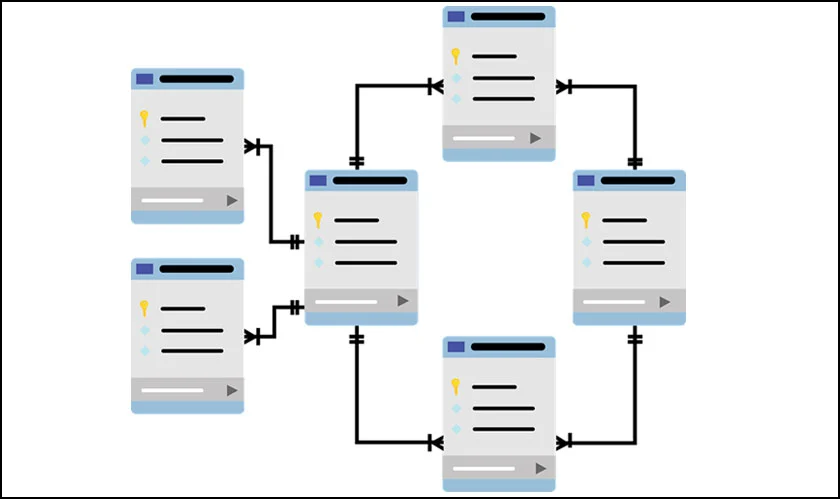Home technology software how to Secure Your Web Application from SQL Injection and Prevent Fraud
Software

CIO Bulletin
2022-06-03
SQL injections are one of the most common attacks on the web whenever online attackers try to steal sensitive information from organizations. SQL injections can affect data-driven applications that use SQL databases, and this type of attack is most commonly used for attacking websites.
Now that we see how common SQL injections are and how they are used to steal sensitive information, how can we secure ourselves against these attacks? Unfortunately, the online world has gained quite an upper hand in stealing sensitive information, and it’s easier than traditional methods.
Let’s not waste any more time because, in this article, we will find out the methods of preventing ourselves against SQL injections and fraud!
Why are SQL injections so risky?
Attackers are taking advantage of online attacks, especially web applications, through the help of SQL injection vulnerabilities. They use these tools to detect SQL injection flaws and exploit SQL injection for personal gains, such as stealing individual identities and much more.
Most applications nowadays are based on data, so without data, they can’t function properly, and this is an advantage for SQL injection vulnerabilities since they are so easily exploited and widespread. Nevertheless, it can be difficult to find the best way to prevent SQL injection.
Moreover, a SQL injection flaw in only one app can lead to a flaw in the other apps as well. As we mentioned before, applications nowadays are data-driven, so you need to be careful about these attacks. They can really cause damage to all your applications, and one attack will lead to the other faster than you think.
Once your data is exploited, here are the following damages SQL injections can cause:
How to protect your web applications from SQL injections and fraud
Say no to dynamic SQL

So, the real question is how to protect yourself against SQL injection? Initially, you want to avoid including inputted data into SQL queries. You need to disable data interpretation to succeed, so it doesn’t process into the database. Furthermore, it doesn’t even matter if it is written in an SQL query format because the system will process and place data the way it is.
Professional developers are well prepared, so they know how to remove single quotes and any other malicious code elements. But, to put it short and straightforward, it’s pretty easy for online attackers to fully gain control over private data. Especially when you are working in a bank, this can become a bigger issue.
Nevertheless, fraud detection in banking is even riskier, since there is so much information moving back and forth. Let’s not forget that if one thing goes wrong, the other will fall right after.
Never trust user input
Before doing anything else, you should ensure that the SQL recognizes the unique syntax and is restricted from accepting any commands from unknown data inputs. You never know, some JSON files may be super harmful to SQL queries, and this is where fraud can quickly happen.
More or less, you should never trust user inputs, so treat them all as untrusted. User inputs that are used in SQL queries can possess SQL injection risks. Regardless of whether the input is public or by internal users, you should treat them equally.
Continuously update and use whitelists
Many businesses will fall into the same trap: trying to use a blacklist to identify online attackers. However, this isn’t the most clever thing to do. Online attackers are clever, and they will always find ways to overcome these obstacles.
Instead of creating blacklists, your best option is to create a whitelist. Unfortunately, older web development technologies don’t have any SQL protection, so you must continuously update your technology to ensure you are protected.
Alternatively, you can try scanning your web applications from time to time. This is an excellent thing to do since it continuously updates you if you need to pay special attention to any threats or not.
Make sure your team is prepared
If you want to stay safe, you can’t only be safe by making the software do all the work, but you need to ensure your team is just as prepared as the software. You can’t explain an attack to a group of people who don’t know what they are doing. Thus, it requires skills to be aware of SQL injections.
It’s important to provide security training to your system admins, developers, and everyone responsible for protecting your organization against SQL injection attacks within your web applications.
Consider using SQL injection prevention tools
According to a study, SQL injections are the oldest and undoubtedly, one of the most dangerous types of online attacks. Moreover, it isn’t something fun, and if you are looking to provide more extensive security, you can consider using SQL injection prevention tools. Whenever you choose the right tool, vulnerability scanning bots are included to scan online sites and see if they have any SQL injection vulnerabilities.
Furthermore, let’s take a look at which are some SQL injection tools you can use:
Before you choose a SQL injection prevention tool, choose one that can detect any potential threats before they actually manage to attack your web application. Many prevention tools have real-time scanning capabilities for stopping online attacks until they actually happen. Usually, bots will do this type of work, and once you set them up, they run automatically.
Can you stop SQL injection attacks only by using a web app firewall?
Many may think it isn’t possible, but you are wrong. SQL injection attacks can be stopped using a web application firewall (WAF). Web app firewalls can identify behavioral patterns that may threaten the web application. Furthermore, you can customize your web security rules, and the firewall will behave and act based on how it is told.
How fast you can set it up and allow quick rule implementations is so good about WAF. It can protect you against several security attacks, and some of the most common ones are:
Furthermore, what’s even more, better about WAF is the fact that it offers real-time application monitoring for security cases and has automatic protection against any potential threats. So, even though many people think using a firewall isn’t such a smart idea, they need to think twice because it’s one of the best web security defense strategies.
Don’t allow specific error displays
This is common amongst many organizations but isn’t the best practice. For example, do you know that time whenever you try to log into an account of yours, but you just can’t remember your credentials? Maybe you typed in your username or password incorrectly, and you see that “incorrect” message highlighted on top in red.
Before, many online attackers would ‘forcefully’ log into these accounts. However, in order to prevent this from happening, the best thing you can do is to turn off the error display limit that is on there.
Why are SQL injections so common?

You may be wondering why these types of attacks are so common? The whole philosophy behind them is that they are easy to set up and not a challenging way for attackers to access sensitive data. Thus, it isn’t astonishing that online attackers love to use this method to get unauthorized access to personal data.
Whenever SQL injections are successful, they allow attackers to steal personal information, gain complete control of database servers, steal transactional data, and much more.
PHP and ASP applications are among the most popular targeted applications. Moreover, what’s even worse is the fact that most businesses will have difficulties in finding solutions to protect themselves from SQL injection attacks.
Wrapping it up
That’s all for this article. These are our methods for securing web applications from SQL injections and preventing fraud attacks. Moreover, SQL injections aren’t challenging to set up so hackers have an excellent chance of taking advantage of these opportunities to steal sensitive information. Nevertheless, since they are so easy to set up, you’ll see that these type of attacks are more frequent.
However, with the evolution of technology and SQL injection tools, it’s easier than ever to set up highly-effective preventive measures to stop online frauds. Even though frauds may occur when you least expect them, you can always undertake the right measures and include both the help of a team of professionals and AI.
Banking-and-finance
Artificial-intelligence
Travel-and-hospitality
Management-consulting
Banking-and-finance
Banking-and-finance
Food-and-beverage
Travel-and-hospitality
Food-and-beverage